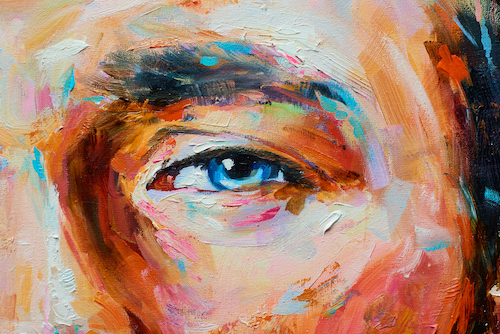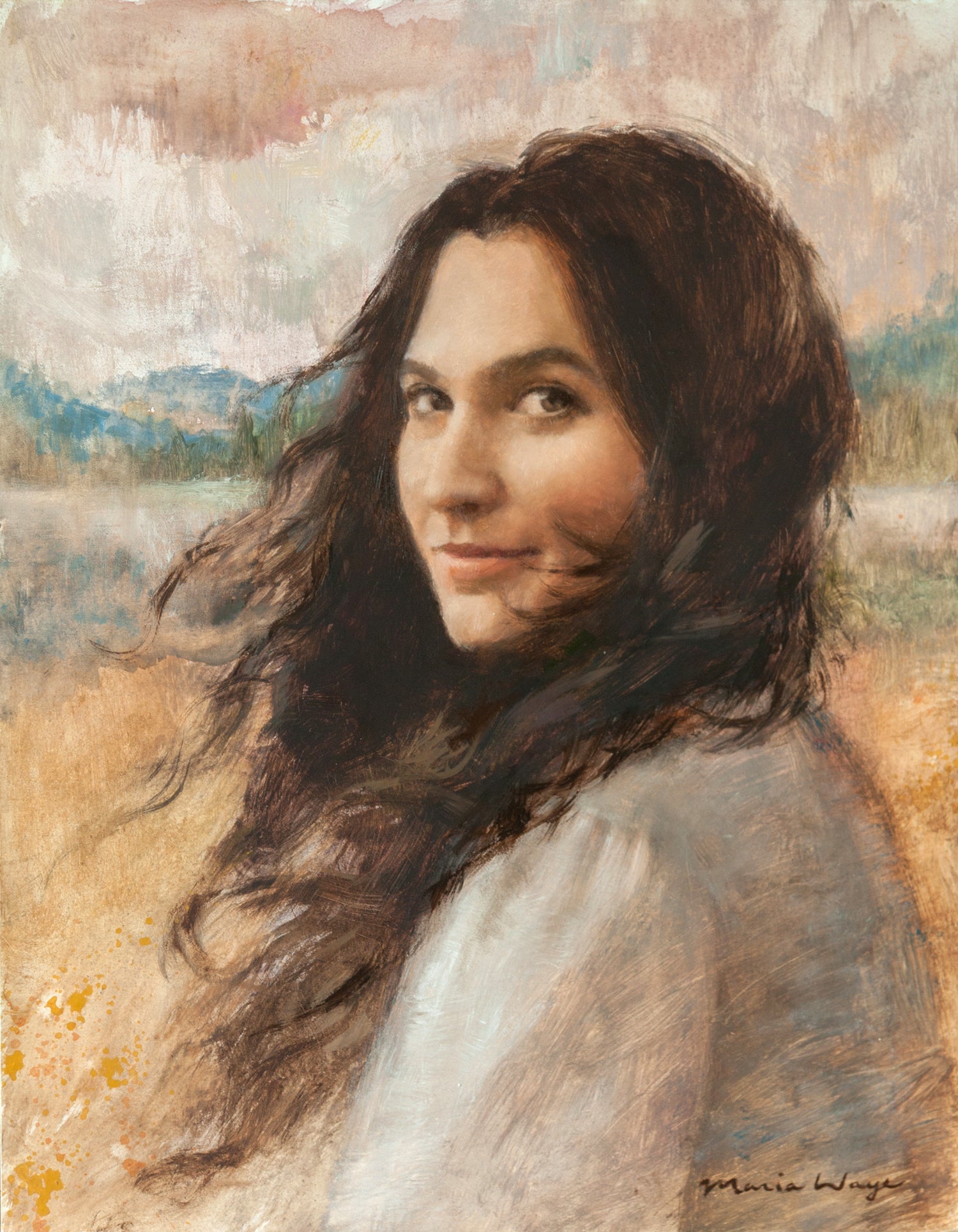Modern and Abstract Oil Paintings for Sale
Modern and Abstract Oil Paintings for Sale
Blog Article
Exploring All Regarding Oil Paints: An Overview to Recognizing Their Charm and Value
Oil paintings have captivated audiences for centuries, offering a glimpse into the artistic proficiency of various periods. Their abundant history is intertwined with cutting-edge strategies and extensive psychological expression. Recognizing the products and methods behind these art work can boost recognition. Furthermore, the market for oil paints provides chances for collection agencies and investors alike. As one explores this remarkable world, the question emerges: what makes an oil painting truly useful?
The History of Oil Paint: A Journey Through Time
Although oil paint has roots that go back to ancient times, it truly grew during the Renaissance, when musicians found its flexibility and abundant shade potential. Early examples can be mapped to the 7th century, with methods advancing especially across cultures. The tool ended up being noticeable in Northern Europe in the 15th century, especially with the jobs of musicians like Jan van Eyck, that pioneered its use for comprehensive realistic look and dynamic tones. This period noted a separation from tempera paints, permitting higher deepness and texture. As oil paint spread, it affected numerous musicians, resulting in work of arts by renowned figures such as Leonardo da Vinci and Rembrandt. The tool's heritage continues, forming the art globe well into modern-day times.
Understanding Oil Paints: Materials and Techniques
As musicians explore the globe of oil paints, they encounter a diverse variety of products and techniques that define this medium. The key components of oil paint include pigments, which offer shade, and drying oils, such as linseed, that bind the pigments and promote application. Various additives can modify the paint's structure and drying time, improving versatility. Methods like glazing, where transparent layers are developed, and impasto, which includes applying thick paint, permit various visual impacts. In addition, the usage of brushes, palette knives, and also fingers can create unique structures and surfaces. Recognizing these methods and materials enables artists to fully express their creative thinking and attain the desired influence in their art work.
The Duty of Shade in Oil Paintings
Shade plays a critical role in oil paintings, affecting both visual appeal and psychological resonance. Comprehending color concept fundamentals, including the partnerships in between hues, can improve an artist's capacity to communicate mood and ambience. Furthermore, understanding shade mixing methods allows for greater depth and splendor in a painting's combination.

Color Theory Basics
Understanding shade theory is crucial for musicians collaborating with oil paints, as it develops the structure for producing harmonious and aesthetically appealing make-ups. Color theory incorporates the study of how shades connect, the color wheel, and the partnerships in between main, additional, and tertiary shades. Artists use complementary shades to enhance contrasts and produce centerpieces, while analogous shades promote unity and cohesiveness within an item. In addition, the concepts of awesome and warm colors affect the assumption of deepness and area in a painting. Understanding these concepts enables artists to control shade successfully, guiding the customer's eye and connecting their intended message. Proficiency of shade concept inevitably enhances an artist's capability to convey feelings and concepts with their job.
Emotional Influence of Color
The psychological influence of color in oil paints plays a vital role in just how viewers regard and connect with artwork. Shades stimulate specific sensations and state of minds, influencing the customer's emotional state. Warm colors like oranges and reds can produce a sense of warmth and energy, while awesome tones such as blues and environment-friendlies frequently stimulate peace or introspection. Artists strategically select shade schemes to enhance narrative elements, guiding the target market's psychological trip. The saturation and contrast of colors better amplify these results, attracting interest and producing emphasis. Ultimately, the interaction of shades in oil paints not just improves their aesthetic appeal but additionally acts as an effective tool for emotional expression, enhancing the audience's experience and interpretation.
Shade Combining Techniques
While lots of elements of oil painting add to the total make-up, grasping color mixing strategies is important for attaining wanted results and deepness. Shade blending can be come close to with different techniques, including the additive and subtractive procedures. Additive blending entails integrating colors of light, while subtractive blending depends on pigments, where colors mix to create brand-new shades. Musicians usually use a limited scheme to produce harmonious jobs, comprehending the relationships in between main, secondary, and tertiary shades. Strategies such as glazing and scumbling additionally enhance deepness and luminosity. By masterfully mixing shades, an artist can evoke feelings, produce centerpieces, and attain a sense of realistic look, eventually boosting the painting's visual and emotional influence.
Famous Oil Painters and Their Iconic Works

Well known for their proficiency of color and technique, oil painters have produced a few of one of the most celebrated artworks in history. Popular artists like Vincent van Gogh mesmerized target markets with his stirring brushwork in "Starry Night," while Claude Monet's "Perception, Daybreak" laid the foundation for Impressionism. Leonardo da Vinci's "Mona Lisa" continues to be a long-lasting icon of imaginative wizard, showcasing his ability in catching human expression. At the same time, Rembrandt's "The Evening Watch" illustrates his innovative use of light and shadow. Other significant figures include Pablo Picasso, who revolutionized modern art with his bold experimentation in works like "Les Demoiselles d'Avignon," and Georgia O'Keeffe, whose lively depictions of landscapes and flowers assisted define American innovation. Each musician's special design added substantially to the oil paint landscape.
Exactly how to Examine the Top Quality of an Oil Painting
Evaluating the high quality of an oil painting entails a mindful analysis of workmanship methods, as well as an evaluation of color and structure. Observing brushwork, layering, and the application of paint can expose the musician's ability level. In addition, the interplay of colors and the general arrangement of components contribute significantly to the painting's visual worth.
Examining Craftsmanship Strategies
A thorough evaluation of workmanship methods is vital for identifying the top quality of an oil painting. Critics ought to initially take a look at the application of paint; thick, textured brushstrokes might suggest a competent hand, while overly consistent applications might suggest an absence of deepness. oil paintings for sale. The layering technique is additionally crucial; the visibility of glazes and differed thickness can enhance luminance and intricacy. Additionally, the high quality of the products used, such as the canvas and pigments, plays a considerable duty in toughness and total visual. Interest to information in elements like edges and shifts in between colors shows the musician's dedication to their craft. Ultimately, these methods add to the painting's emotional effect and market price, acting as indicators of the artist's skill and intent
Assessing Shade and Composition
While assessing the high quality of an oil paint, one must concentrate on the interaction of shade and make-up, as these aspects are fundamental to the artwork's general effect. Color options can develop and stimulate feelings state of mind; therefore, the artist's palette ought to be taken a look at for consistency and comparison. A healthy make-up routes the visitor's eye and develops a feeling of unity. Musicians often employ techniques like the rule of thirds or leading lines to enhance aesthetic passion. In addition, using light and darkness can include deepness, improving the three-dimensionality of the painting. Ultimately, a successful oil paint weds color and structure, engaging the customer and welcoming a much deeper admiration of the musician's vision and technique.
Caring for and Preserving Oil Paintings
Proper care and preservation of oil paintings is necessary for keeping their honesty and longevity. To safeguard these artworks, it is vital to display them away from direct sunlight, which can cause fading and discoloration. Maintaining a stable environment with controlled temperature and humidity additional aids in avoiding damage. Cleansing ought to be done gently making use of a soft, dry towel, preventing any rough chemicals that might harm the paint or varnish. Routine assessments for signs of deterioration, such as cracking or flaking, are suggested. When carrying or storing oil paintings, proper cushioning and framing are required to prevent physical damage. Inevitably, persistent treatment contributes to the aesthetic appeal and value of oil paints in time.
The Market for Oil Paintings: Spending and gathering
Comprehending the market characteristics for oil paintings is important for collectors and capitalists alike. The value of these artworks is affected by numerous elements, consisting of the musician's credibility, historic value, and current patterns. Enthusiasts often seek items that resonate personally while thinking about possible admiration in value. Auctions and galleries function as key places for buying and selling, with costs changing based upon demand and rarity. Investing in oil paintings needs research into the market, in addition to an understanding of credibility and provenance. Furthermore, arising artists may provide possibilities for considerable returns, while developed names can regulate high costs. On the whole, a tactical technique to gathering can generate both visual satisfaction and financial rewards.

Frequently Asked Questions
What Are the Ecological Impacts of Oil Paint Materials?
The ecological influences of oil paint products consist of the release of volatile organic compounds (VOCs), unsafe waste generation, and source removal for pigments. These variables add to pollution and ecological degradation, raising issues among ecologically conscious musicians and customers.
Exactly How Do Various Canvases Affect Oil Paint Results?
Various canvases affect oil painting results substantially. Absorbency, structure, and surface area quality can change paint application, drying out times, and color vibrancy. Musicians frequently select details canvases to accomplish wanted effects and improve their imaginative expression.
Can Oil Paintings Be Restored if Harmed?
Oil paintings can undoubtedly be recovered if damaged. Specialist conservators use numerous techniques to repair splits, clean surfaces, and address discoloration, making sure that the art work maintains its original beauty and worth more info for future generations.
What Are the Indicators of an Original Oil Paint?
The indications of an initial oil paint include noticeable brush strokes, structure variants, and an unequal canvas weave (oil paintings for sale). Additionally, credibility may be validated with provenance, trademarks, and the visibility of a varnish layer special to oil mediums
Just How Has Innovation Influenced Modern Oil Painting Techniques?
Innovation has substantially influenced modern-day oil paint strategies by presenting digital tools for planning, enhanced products for appearance and long life, and online platforms for selling and sharing art, therefore broadening musicians' creative opportunities and target market get to. Oil painting has roots that date back to old times, it truly grew throughout the Renaissance, when artists discovered its convenience and rich shade possibility. The emotional effect of shade in oil paints plays a crucial function in just how audiences perceive and link with art work. While many elements of oil paint add to the total structure, grasping color blending strategies is necessary for accomplishing desired effects and deepness. Examining the quality of an oil painting includes a mindful evaluation of workmanship strategies, as well as an analysis of color and structure. While examining the top quality of an oil paint, one must focus on the interplay of color and structure, as these aspects are essential to the artwork's general effect.
Report this page